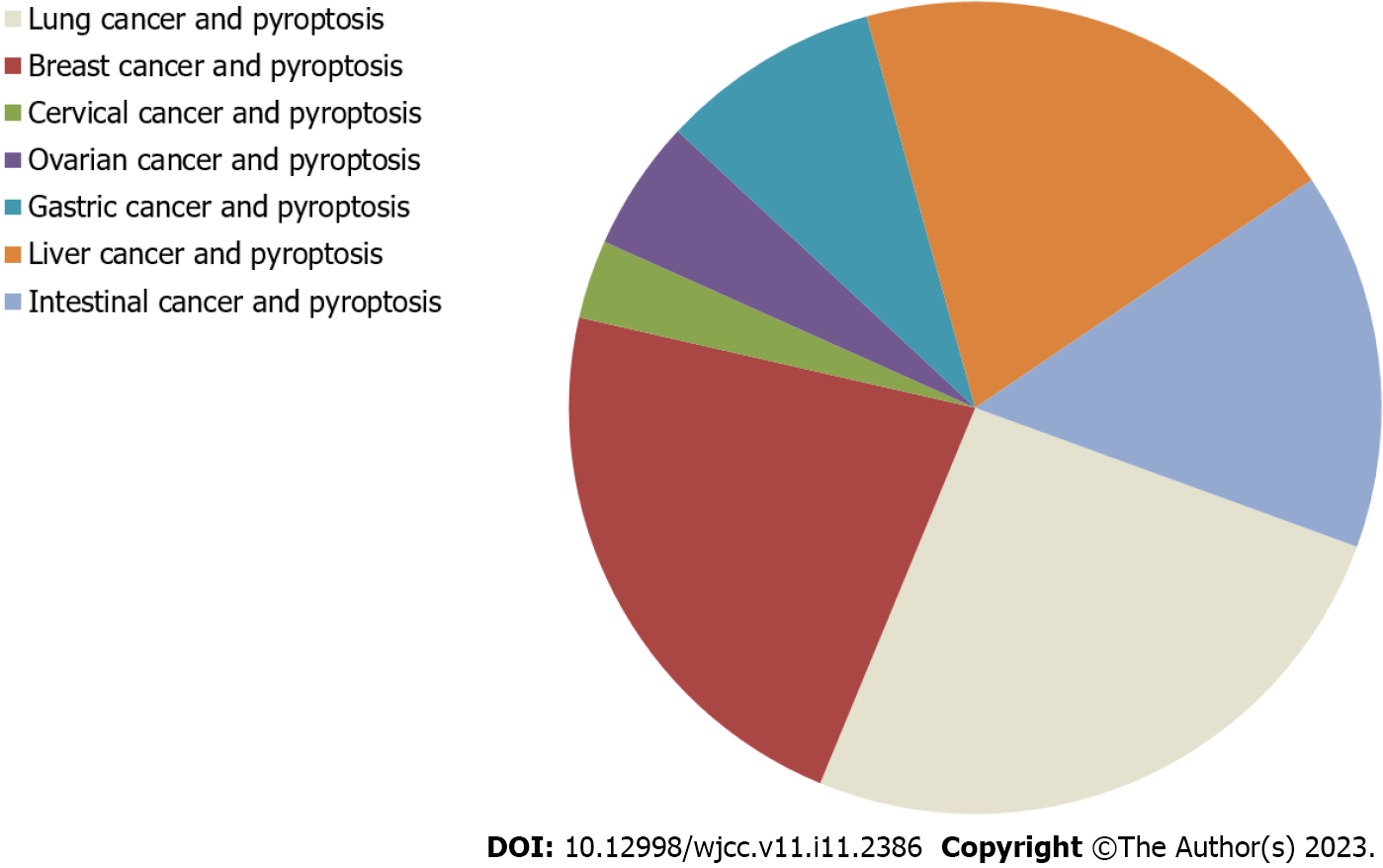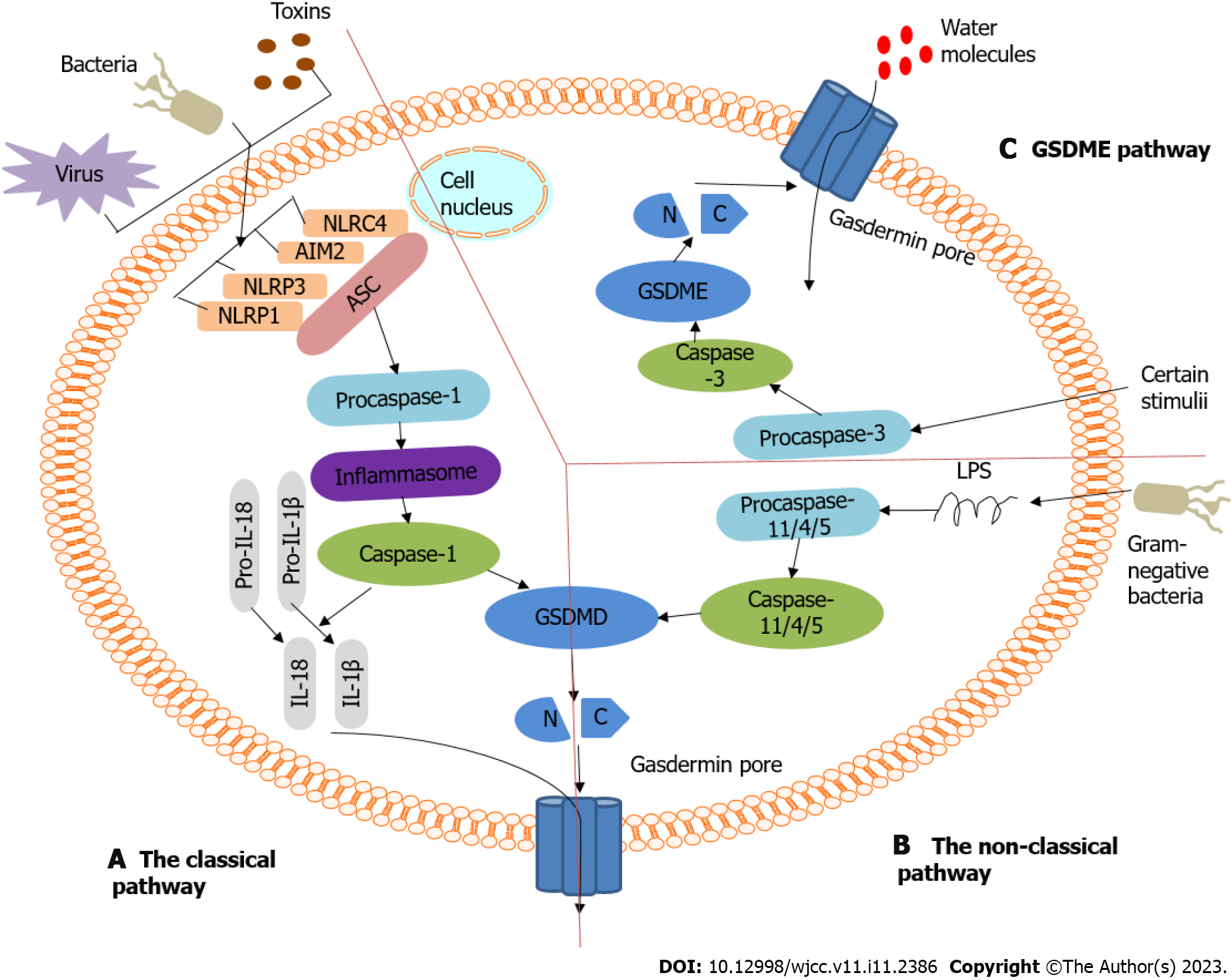Copyright
©The Author(s) 2023.
World J Clin Cases. Apr 16, 2023; 11(11): 2386-2395
Published online Apr 16, 2023. doi: 10.12998/wjcc.v11.i11.2386
Published online Apr 16, 2023. doi: 10.12998/wjcc.v11.i11.2386
Figure 1 PubMed-searchable publications on pyroptosis and various cancers.
Publications were displayed through a search using “pyroptosis and various cancers” on October 7, 2022.
Figure 2 Molecular mechanism of pyroptosis.
Pyroptosis belongs to the inflammatory death pathway. It can be divided into the classical pathway, which is dependent on caspase-1, and the non-classical pathway, which is dependent on caspase-4, 5, and 11. A: The classical pyroptosis pathway: Upon sensing pathogen-associated molecular patterns, damage-associated molecular patterns, or other cytosolic disturbances, caspase-1 is activated via the recruitment of ASC. Caspase-1 successively promotes the maturation of pro-IL-18/1β and cleaves GSDMD to form GSDMD-N and GSDMD-C domains. The GSDMD-N domain interacts with phospholipid proteins on the cell membrane to form holes, leading to the secretion of IL-1β/18 and water influx and causing cell swelling and osmotic lysis; B: The non-classical pathway that depends on caspase-4, 5, and 11: When lipopolysaccharide derived from bacteria recognizes and activates caspase-11/4/5, it can also cause pyroptosis by cleavage of GSDMD; C: A new pathway to cause pyroptosis is caspase-3/GSDME. Caspase-3 can be activated by the death receptor and mitochondrial pathway. Mature caspase-3 cleaves GSDME to produce GSDME N-fragments and participates in pore formation in the plasma membrane, which results in cell swelling and pyroptosis. ASC: Apoptosis-associated speck-like protein containing a caspase recruitment domain; IL: Interleukin, GSDMD: Gasdermin D; GSDME: Gasdermin E; NLRP1: NOD-like receptor protein 1; NLRP3: NOD-like receptor protein 3; AIM2: Absent in melanoma 2; NLRC4: NLR family CARD domain-containing protein 4; LPS: Lipopolysaccharide.
- Citation: Liu SW, Song WJ, Ma GK, Wang H, Yang L. Pyroptosis and its role in cancer. World J Clin Cases 2023; 11(11): 2386-2395
- URL: https://www.wjgnet.com/2307-8960/full/v11/i11/2386.htm
- DOI: https://dx.doi.org/10.12998/wjcc.v11.i11.2386










